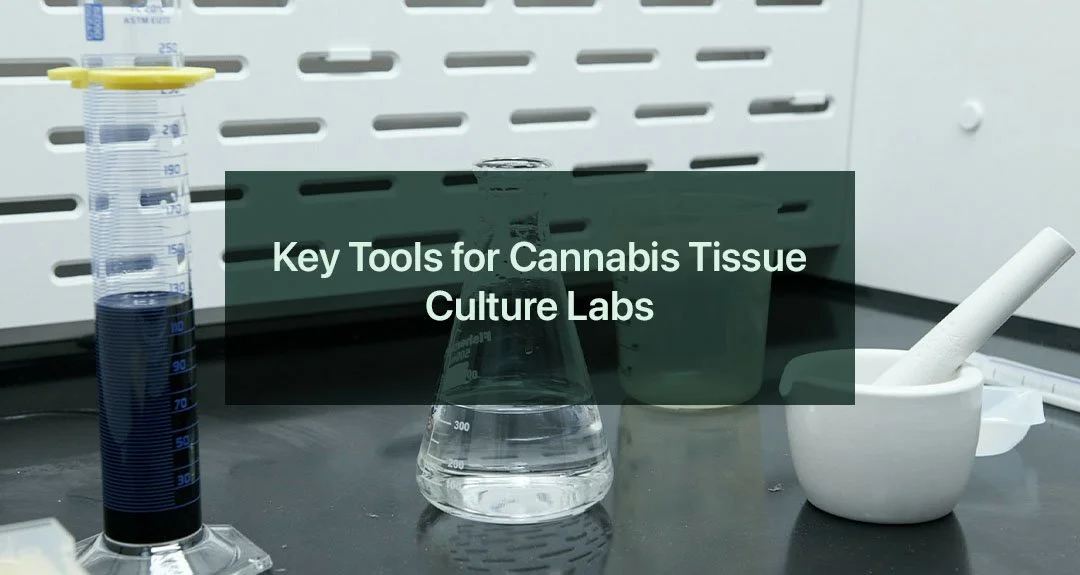Key Tools for Cannabis Tissue Culture Labs
Blog Content:
In the ever-evolving world of cannabis cultivation, the adoption of advanced techniques is not just beneficial—it's essential for staying competitive and innovative. Among these techniques, tissue culture stands out as a game-changer. Tissue culture allows for the preservation of genetics, production of disease-free plants, and scalability in ways traditional cloning cannot match. Setting up a cannabis tissue culture lab requires understanding and investing in specific equipment that is fundamental to the success of this delicate process. This article will explore the essential equipment to establish a functional and efficient cannabis tissue culture lab.
Sterilization Equipment
Sterilization is paramount in tissue culture to prevent contamination. Contaminants such as fungi, bacteria, and viruses can quickly ruin your cultures, losing time and resources. Thus, a reliable autoclave and an industrial laboratory glassware washer are must-haves. Autoclaves use steam under high pressure to sterilize culture media, tools, and containers. Industrial dishwashers that operate with steam and hot water are used to clean the glassware required to make media and solutions.
Biosafety Level 2 and Laminar Flow Hoods
Biosafety Level 2 and laminar flow hoods provide a sterile environment for manipulating the various procedures involving plant tissues. They filter air through a HEPA filter, creating a workspace free of airborne contaminants. This equipment is crucial for transferring and planting explants (tissue samples), ensuring that your culture remains uncontaminated from the outside environment.
Culture Media and Supplies
The heart of tissue culture is the culture media—a nutrient-rich solution that supports the growth and development of plant cells. This media typically contains a blend of macronutrients, micronutrients, vitamins, plant hormones, and a gelling agent like agar. Precise formulation of the culture media is critical, as it varies depending on the plant species and the desired outcome (e.g., callus formation, shooting, or rooting). Alongside the media, you'll need culture vessels (such as Petri dishes) and a pH meter to ensure the media's pH is within the optimal range for your cannabis strains.
Microscope
A good-quality microscope is invaluable in a tissue culture lab. It's essential for examining plant tissues, ensuring the health of your cultures, and identifying any signs of contamination early on. Additionally, a microscope is crucial for the precise cutting and handling of explants, especially when dealing with microscopic or delicate tissue samples.
Growth Chambers or Incubators
After the initial culture setup, the explants require a controlled environment to thrive. Growth chambers or incubators provide these conditions, allowing control over temperature, light, and sometimes humidity. These parameters can significantly affect the success rate of your cultures, making a reliable incubator an indispensable part of your tissue culture lab.
Conclusion
Establishing a cannabis tissue culture lab is a significant step toward advanced cultivation techniques that can revolutionize your cannabis production. The equipment outlined above forms the backbone of a tissue culture lab, enabling the production of healthy, genetically consistent plantlets. By investing in the right tools and equipment, you're not just setting up a lab but paving the way for innovation, scalability, and success in the competitive cannabis industry.
As you embark on this exciting journey, remember that each piece of equipment plays a vital role in the complex ballet of tissue culture. From sterilization to incubation, every step is critical to achieving your cultivation goals. With the right setup, your cannabis tissue culture lab will be a hub of innovation and quality, setting new standards in the cannabis cultivation landscape.





Ensure the security and privacy of your cannabis cultivars with cold storage solutions that protect your intellectual property and provide exclusive access.